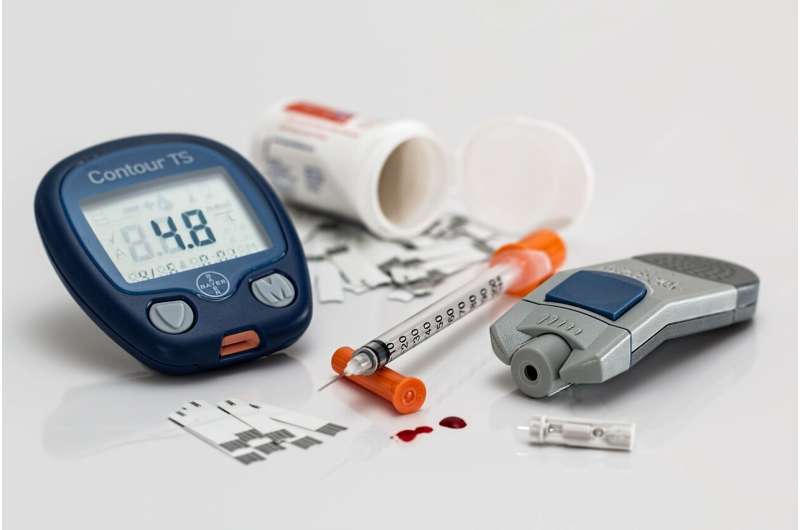
A study by Monash University has uncovered that liver metabolism is disrupted in people with obesity-related type 2 diabetes, which contributes to high blood sugar and muscle loss—also known as skeletal muscle atrophy.
Using human trials as well as mouse models, collaborative research led by Dr. Adam Rose at Monash Biomedicine Discovery Institute has found the liver metabolism of the amino acid alanine is altered in people with obesity-related type 2 diabetes. By selectively silencing enzymes that break down alanine in liver cells, high blood sugar and muscle loss can be reversed by the restoration of skeletal muscle protein synthesis, a critical determinant of muscle size and strength.
The research, published today in Nature Metabolism, has shown the altered liver metabolism directly affects muscle size and strength and the mechanism behind this is driven by elevated levels of the hormones cortisol and glucagon which enhance the cycling of amino acids between liver and skeletal muscle, causing muscles to become smaller and weaker.
Along with metabolic dysfunction and related complications, an often overlooked co-morbidity of obesity is skeletal muscle atrophy, which causes frailty, and is related to reduced life-quality and death.
“The ageing-related diseases of skeletal muscle loss and type 2 diabetes are very prevalent and are a huge societal and economic burden. We have known for some time that the ageing-related diseases of skeletal muscle loss and type 2 diabetes were linked but we didn’t know how,” Dr. Rose said.
He adds: “Our studies demonstrate that the liver is a critical control point for muscle protein metabolism; a discovery that is quite surprising. We believe that our new findings highlight the need to examine the role of skeletal muscle atrophy in type 2 diabetes more closely in human clinical populations.”
Source: Read Full Article
